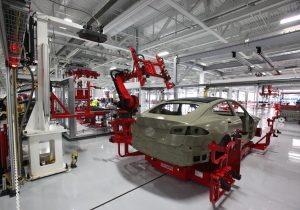Adding one industrial robot to the workforce will reduce employment by 6.2 workers and reduce wages for the local economy, says a new study from the National Bureau of Economic Research. What’s more, there aren’t any significant increases in other jobs in the impacted areas to offset the losses – one finding that surprised even the study’s authors.
Economists Daron Acemoglu of MIT and Pascual Restrepo of Boston University looked at data spanning between 1990 and 2007 to reach their findings. Overall, they saw that one new industrial robot per thousand workers reduced the employment-to-population ratio by about 0.18-0.34 percentage points and wages by 0.25-0.5 percent. During this time, robots were responsible for the loss of up to 670,000 manufacturing jobs.
To be fair, the study focused on individual communities so it’s possible new jobs were getting created in other parts of the country instead of the local areas. But realistically, these aren’t accessible to the communities losing blue-collar work and the numbers illustrate just how much local populations are facing the brunt of automation.
And in case you thought the figures didn’t look so large, keep in mind the definition of robot used in the study was pretty conservative. It was set by the International Federation of Robotics, which says a robot is “an automatically controlled, reprogrammable and multipurpose [machine].” So it leaves out software that could ultimately automate away desk jobs as well as single-purpose machines like coffeemakers.
The study went on to forecast an even greater decline in the employment-to-population ratio in the coming decade as industrial robots quadruple in number by 2025. What the findings make clear is automation stands to have a big impact on jobs in the more rural communities of the U.S. Yet, while there’s a lot of debate going on over what to do to address displacement, there’s no solution in sight.
For their part, the current administration is making it clear it plans to simply sleep through the problem. Donald Trump’s treasury secretary Steve Mnuchin said as much when he stated he thinks it’ll be another 50 to 100 years for automation to become a problem for labor.
Meanwhile, the idea of guaranteeing a living wage to the disenfranchised is slowly gaining more attention around the world. Last year, Finland became the first country in the world to experiment with handing out a universal basic income (UBI) while Amsterdam rejected the idea in a referendum.
Dallas Mavericks owner and business mogul Mark Cuban disagrees with idea of UBI but is nonetheless vocal about AI’s potential impacts on the labor workforce. He envisions a future where jobs that AI can’t take over get into high demand. So rather than aim for that CPA, you might be better off pursuing a creative field or joining Americorp.
There are a lot of ideas being put on the table right now but not as much consensus on where to actually go from here. One thing we can’t deny is studies like this show that change is already well under way. It’s up to us to take action or face becoming obsolete at work.











